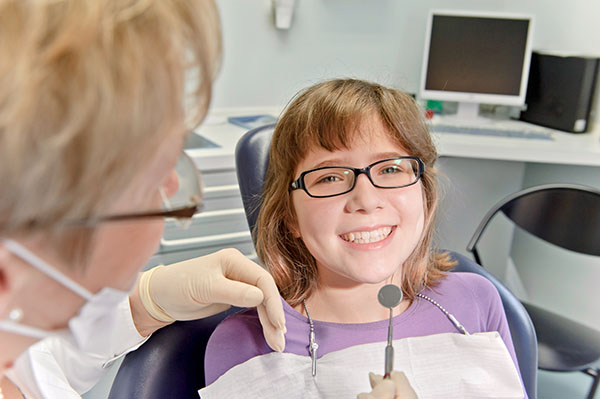What To Expect During a Child’s Visit to a Pediatric Dentist

Children require special handling, especially when it comes to something new, such as visiting a pediatric dentist. It is good to understand what goes on at a regular pediatric checkup from the first visit to follow-up appointments in order to help calm children and set their expectations.
A pediatric dentist understands how to treat children
A dental such as like pediatrics indicates that a provider has gone through further education and training to learn how to best deal with the unique needs of treating children's teeth. These dentists typically can talk to children in age-appropriate ways. Patience and guidance throughout an exam are essential in making children feel comfortable with receiving oral health checkups.
The first appointment
A child's first trip to the dentist should occur after the first tooth makes an appearance, according to MouthHealthy.org. This allows infants and parents to meet with a pediatric dentist and learn about the methods required to keep all incoming teeth as healthy as possible. Weaning children from bottles, breastfeeding and pacifiers may be discussed at this first appointment. The dentist will examine the mouth and gums and inspect the jawline and facial structure to help diagnose any issues that may impede further tooth development.
Regular pediatric dental appointments
The American Dental Association recommends that children should visit the dentist every six months. This may seem excessive, especially when dealing with hectic schedules, but maintaining a healthy mouth is crucial for long-term oral health success. Knowing what happens at these regular visits may help reinforce the necessity.
X-rays
The dentist may begin taking X-rays of a child's mouth as early as necessary if there is a problem detected in that first exam. If there are warning signs of significant decay in baby teeth or developmental issues, the dentist may start taking X-rays annually or more frequently depending on the situation.
Teeth cleaning
A dental hygienist assists the practitioner in counting and cleaning teeth. This usually occurs before the dentist's examination of the teeth. Some practitioners clean teeth themselves. Cleaning involves the use of an electric brush and toothpaste to help break down the bacteria on the surface of the teeth. The hygienist also flosses between the teeth. The staff may also instruct parents and children how to clean all areas of the mouth properly.
Evaluating growth
The dentist examines the teeth for signs of decay. The practitioner looks at the mouth and X-rays to determine if there is a problem with tooth development and growth. If any cavities are detected, the dentist will formulate a treatment plan for a later date to fill and treat the decaying teeth. The dentist will address any concerns over development or decay to the caretakers.
Conclusion
A visit to the pediatric dentist does not have to be scary for children or parents. This valuable medical team member provides vital services to keep children on the right path for a successful transition from baby teeth to permanent ones. Getting kids used to practicing good oral health habits can make the dental road ahead smoother.
Request an appointment here: https://dragonflydentalportcharlotte.com or call Dragonfly Dental of Port Charlotte at (941) 676-9225 for an appointment in our Port Charlotte office.
Check out what others are saying about our services on Google: Read our Google reviews.
Related Posts
The field of general dentistry involves taking care of the whole mouth, not only the teeth. Tobacco use is dangerous to your overall well-being, but your oral health is particularly at risk. When you smoke, your mouth is the first place that the nicotine and tar go. A general dentist sees firsthand the damage that…
Dentures are a removable option for replacing missing teeth that can provide the wearer with either a full or partial set of false replacement teeth. Your best choice depends on the number of natural teeth that need to be replaced. In either case, a crucial aspect of successful denture wearing is proper care and hygiene…
Dentist consultations are a great place to learn more about options for replacing missing teeth. There are several different options for replacing missing teeth. During a consultation, a dentist will help you determine the treatment option that best suits your health and circumstances, guiding you towards a healthier future for your smile.A dentist consultation should…
Gingivitis is a type of mild gum disease that is often caused by poor general dentistry and oral hygiene habits such as not brushing and flossing teeth as often as recommended. Other causes include tobacco use, poor nutrition, and taking certain medications. Fortunately, this condition usually remains mild if caught and treated early. If not…
